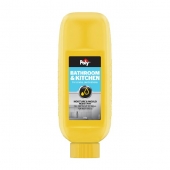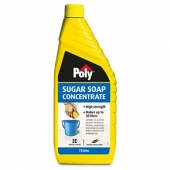How to
Here you'll find a selection of helpful how-to guides and videos to help you achieve that perfect finish for your next project. To continue, please specify the area of the house you are working on from the interactive map below.
How to prepare a bathroom or kitchen for painting
The key to achieving a flawless paint finish is preparation. A fresh coat of paint can often accentuate imperfections on plaster walls so it's important that small cracks, dents and chips are properly filled and sanded to create a smooth, even surface for a picture perfect finish. In areas affected by moisture such as bathrooms, kitchens and laundries we recommend using products specially designed to resist mould growth.
Before starting on your walls, it's a good idea to clear your bathroom or kitchen of accessories and appliances. Use good quality drop sheets to avoid getting paint and dust on benchtops, sinks and floor surfaces.
You'll need:
- Poly Sugar Soap
- Polyfilla Bathroom & Kitchen
- A flexible filling blade
- Fine sandpaper
- A soft brush
- Painters tape
- Ensure your walls have no remaining nails, pins, etc. With fine sandpaper, remove lumps, bumps and any paint flakes. Brush off excess dust and then wash down the walls thoroughly with Poly Sugar Soap to remove mould, grease and grime. Let the sugar soap dry completely before filling.
- Apply a small amount of Polyfilla Bathroom & Kitchen to your filling blade and draw it across each imperfection on the wall. For larger areas, a trowel should be used.
- Using the filling blade, remove excess and skim the filled areas lightly in both directions a few times to ensure a no air bubbles are present in the filled space. Feathering the edges will also minimise sanding. Finish by drawing down with firm pressure.
- Wait until the application has dried (2-3 hours for thin 2-3mm applications depending on humidity), then lightly sand the filled areas to an even finish.
- Remove dust with a soft brush. Allow longer drying times for deeper applications or if painting with oil based paints (24 hours minimum). There is no need to use water or sugar soap to clean dry filled surfaces prior to painting.
- For deeper jobs, apply in 10mm layers allowing each layer to set before applying the next layer.
Taping
Invest in a good painterís tape and carefully tape off any skirting, architraves, woodwork, etc. As you apply it, gently rub across the edge of the tape that will be painted to help prevent any paint from seeping underneath
Now you've created a smooth, blemish free surface, youíre ready to paint and achieve a perfect finish! For best results, apply paint undercoat before applying your top coat.

